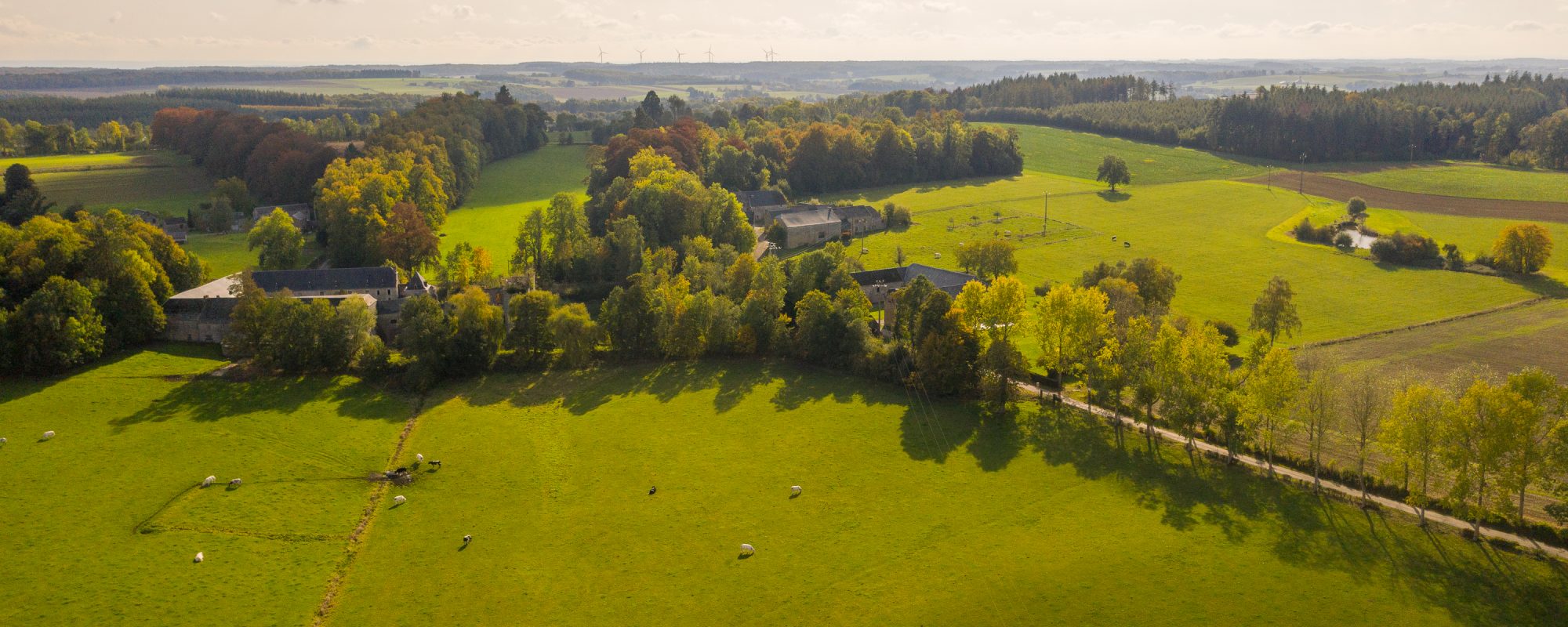Condroz,Alternating crests and valleys
The Condroz looks out over a rural setting dotted with crops and pastures in an undulating countryside of crests and valleys.

The Condroz looks out over a rural setting dotted with crops and pastures in an undulating countryside of crests and valleys.

The Condroz is a transition zone between the rich soils of the northern silt plateaus and the poorer soils of the south.
This landscape is closed off to the north by the Sambre-Meuse ridge and is a vast, undulating plateau stretching along both sides of the Upper Meuse valley. Erosion has sculpted the Condroz relief in successive waves where relatively hard sandstone ridges alternate with softer limestone depressions, giving the Condroz its specific natural structure.
The vegetative cover accentuates the impact of this very particular topography on the Condroz landscapes: gentle slopes of the relief devoted to ploughing, valley bottoms covered with meadows and summits topped by wooded massifs.
Surrounded to the north by the Sambre and Meuse valley, the Condroz landscape is a vast, undulating plateau that stretches along both sides of the Upper Meuse valley. Erosion has carved out the relief of the Condroz region in waves, alternating between hard sandstone ridges and softer limestone depressions. These waves are characteristic of the natural features of the region. The vegetation accentuates the unique configuration of the Condroz: the gentle slopes of the relief are devoted to farming, the valley floors are covered with meadows, and the summits are covered in woods.
The rural landscape characteristic of the Condroz belongs to the mixed Openfield model. This model of arrangement of the rural landscape refers to an open agricultural landscape. It is equally dedicated to meadows and unfenced crops. The mixed Openfield is based on a concentric structure. That is to say, it comprises a nucleus of dwellings, surrounded by meadows, then croplands, and finally a wooded area. The geology of the Condroz region sheds further light on the subject. Firstly, the lower limestone hillsides with poor soils are covered with meadows. Secondly, the gently sloping hillsides with well-drained soils and nutrient-rich silt are used for crops. Finally, the sandstone ridges which decompose into sandy soils of low fertility are covered with woods.
The region’s villages are often located at the bottom of the hillside or slightly below the peaks. They are characterised by a dense group of buildings along the crests. Sometimes other villages are formed in the flat areas of the valleys. The positioning of the buildings is quite variable and responds more to the need for a good orientation for the house than to an alignment dictated by the road. The houses are often semi-detached, but the villages preserve an airy structure with many wooded areas. Outside the villages, dwellings are rarer. The main buildings spread throughout the landscape are mostly large farms or castles with a very strong heritage character.
The typical house in the Condroz region is tall and not very deep, with a relatively long façade. Lots of the houses are single-block. This means that all the building’s functions are grouped under the same roof. But you can also observe more complex volumetric entities in the landscape. They have small, annexed buildings joined perpendicular or not to the main building. This arrangement defines an area for traffic flow or work in the shape of an open courtyard.
In larger farms, a wall closes off the courtyard, accessible only via a fence or a gate. The traditional houses of the Condroz are built with local materials extracted from the many quarries of the region. Depending on the locations, the façades have grey reflections of limestone and warmer shades of blond sandstone. The stones are sometimes covered in white plaster. On the roofs, one can observe the slates and grey tiles most of the time, the red tile being rarer.
Maison du Tourisme Condroz-Famenne
Place Monseu 23, 5590 Ciney
Tél. : +32 (0) 86 40 19 22
Site web
Explore-Meuse
Avenue du Colonel Cadou, 8 5500 Dinant
Tél. : +32 (0) 82 22 28 70
Site web
Prolongez aussi votre visite en Wallonie sur VISITWALLONIA.BE
The association Les Plus Beaux Villages de Wallonie (The Most Beautiful Villages of Wallonia) oversees a network of 32 villages, bearers of a strong territorial identity and reflecting traditional architecture. It is committed to promoting the rural, cultural and natural heritage of Wallonia and is a part of the development of local and responsible tourism.
More information